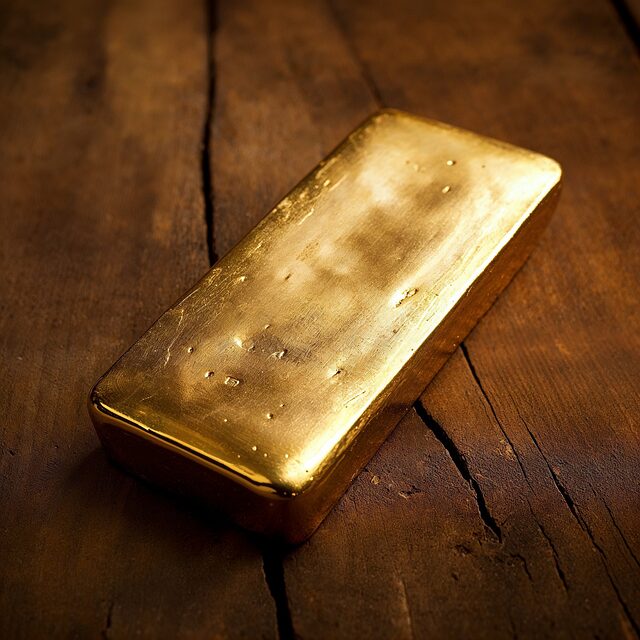To convert a traditional IRA into one that includes precious metals through a self-directed IRA, investors must choose a trustee or custodian experienced with these types of accounts and familiar with IRS regulations on alternative assets like gold, silver, platinum, and palladium. The IRS imposes purity standards for included metals to preserve the tax-advantaged status of the account. The process involves establishing a new self-directed IRA, initiating a direct rollover, purchasing IRS-approved metals, and storing them in an IRS-approved depository. Throughout this transition, investors should work closely with financial advisors to ensure their investment strategy is aligned with personal goals and tax implications, while maintaining compliance with all legal and regulatory requirements. It's crucial to select a gold form that meets the minimum purity standard of 99.5% for IRS compliance, and to be aware of the different tax implications between traditional and Roth IRAs, especially regarding early withdrawals before reaching the age of 59½. Expert advice from professionals well-versed in self-directed IRAs and tax laws is essential to effectively incorporate precious metals into a retirement portfolio.
Navigating the intricacies of retirement investment strategies often leads investors to consider alternative assets such as precious metals. This article delves into the process of converting a traditional IRA to a gold-backed IRA, offering a comprehensive guide to the steps involved, the selection of trustworthy custodians, and the nuances of investing in physical gold while adhering to compliance and tax regulations. By understanding the framework of self-directed IRAs for precious metals investments, investors can make informed decisions to diversify their retirement portfolios with tangible assets like gold.
- Understanding Self-Directed IRAs for Precious Metals Investments
- Steps to Convert Traditional IRA to a Gold IRA
- Selecting a Trustee and Custodian for Your Gold IRA
- Choosing the Right Type of Gold for Your Investment
- Compliance and Tax Considerations When Owning Physical Gold in an I
Understanding Self-Directed IRAs for Precious Metals Investments

When considering the transformation of a traditional IRA into a portfolio rich with precious metals, the first step is to grasp the concept of a self-directed IRA. This type of individual retirement account allows for investments that extend beyond the conventional stock and bond markets, enabling individuals to allocate funds towards physical gold, silver, platinum, and palladium. The key distinction here is that while traditional IRAs are limited to diversified investment vehicles approved by the IRS, self-directed IRAs offer a broader scope for investors to include tangible assets like precious metals as part of their retirement savings strategy.
To navigate this path successfully, it’s imperative to partner with a trustee or custodian who specializes in self-directed IRAs and is experienced in handling alternative assets such as precious metals. These custodians are familiar with the IRS regulations that govern these investments, ensuring compliance while facilitating the acquisition, storage, and management of the metals within the IRA framework. Investors must also adhere to specific purity standards for the metals they acquire, as dictated by the IRS, to maintain the tax-advantaged status of their retirement account. Understanding these requirements and working with knowledgeable professionals are crucial steps in leveraging a self-directed IRA to build a retirement portfolio that includes precious metals.
Steps to Convert Traditional IRA to a Gold IRA

To transform a traditional IRA into a gold IRA, an individual must initiate a series of strategic steps that align with IRS regulations. The conversion process begins with selecting a reputable custodian specializing in self-directed IRAs that permit investments in physical gold, silver, platinum, and palladium. This custodian will guide you through the necessary paperwork and ensure compliance with all legal requirements. Once a custodian is chosen, the account owner must establish a new self-directed IRA.
Subsequently, the account owner or their nominated IRA trustee must direct the funds from the traditional IRA to be transferred into the newly established self-directed IRA. This transfer must adhere to direct rollover procedures, avoiding any personal handling of the funds to maintain tax-advantaged status. After the funds are moved, the custodian will purchase the approved precious metals on behalf of the IRA. The IRS mandates that these metals meet specific fineness or purity standards and must be held in an IRS-approved depository. The final step involves confirming the purchase and ensuring that the IRA now holds the chosen gold investments, with ongoing management by the custodian to maintain IRS compliance. Throughout this process, it is crucial to work closely with both the custodian and a knowledgeable financial advisor to navigate the rules effectively and ensure the conversion aligns with your investment goals and tax considerations.
Selecting a Trustee and Custodian for Your Gold IRA

When considering the conversion of a traditional IRA to a gold IRA, selecting a trustee and custodian who specialize in precious metals is paramount. The trustee, who manages the administrative aspects of the IRA, must be experienced in self-directed plans and capable of handling the unique requirements associated with gold investments. This includes understanding the specific rules that govern IRS-approved precious metals. The custodian, on the other hand, is responsible for safeguarding the physical assets within the IRA. They should be a reputable depository or company authorized to store IRS-compliant gold, silver, platinum, and palladium. It’s crucial to choose custodians and trustees with a solid track record in the precious metals industry, as they will ensure the security, integrity, and compliance of your gold IRA investments. Their expertise is essential for navigating the complexities of IRS regulations and ensuring that your investment aligns with IRS standards for acceptable precious metals holdings within an IRA framework.
Choosing the Right Type of Gold for Your Investment

When considering the conversion of your IRA to gold, it’s crucial to select the appropriate type of gold that aligns with your investment goals and regulatory requirements. Gold comes in various forms, including bullion coins, gold bars, and rare gold coins. Among these, American Eagle, Canadian Maple Leaf, and South African Krugerrand are popular bullion coins commonly allowed within self-directed IRAs. These coins are recognized for their purity—usually 22 karats or .917 fine gold—and are approved by the IRS for IRA investment.
Moreover, investors must consider the storage and custodial aspects associated with owning physical gold within an IRA. The chosen type of gold should be easily accessible for audits and must be stored in a depository approved by the IRS. Additionally, rare gold coins, while potentially more valuable, carry higher premiums and require more due diligence to ensure they are IRS-compliant. It’s advisable to consult with a precious metals expert or a financial advisor specializing in self-directed IRAs to navigate the selection process and ensure compliance with IRS rules and your investment strategy. This will help you make an informed decision on the type of gold that best suits your long-term investment objectives within an IRA framework.
Compliance and Tax Considerations When Owning Physical Gold in an I

When considering the inclusion of physical gold within a self-directed Individual Retirement Account (IRA), compliance with Internal Revenue Service (IRS) regulations is paramount. The IRS stipulates that IRA assets must be held by a trustee who specializes in self-directed IRAs to comply with the Employee Retirement Income Security Act of 1974 (ERISA). This trustee cannot commingle these assets with any other property nor can they use them for any purpose other than what is deemed permissible under IRS rules. Additionally, the gold held within the IRA must meet specific purity standards set forth by the IRS; generally, this means gold that is 99.5% pure or better.
Tax considerations are also a critical aspect when owning physical gold in an IRA. The tax treatment of these assets is subject to the rules governing traditional and Roth IRAs. For example, in a traditional IRA, contributions may be tax-deductible, and taxes on the growth of investments are deferred until distribution. In contrast, a Roth IRA offers tax-free growth, provided certain conditions are met. Early withdrawal of funds from an IRA before reaching the age of 59½ typically incurs penalties and taxes, unless an exception applies. It’s important to consult with a tax professional or financial advisor to navigate these rules effectively, ensuring that the investment strategy aligns with your overall retirement planning goals and complies with all applicable tax laws.
In conclusion, transitioning a traditional IRA to a gold-backed investment within the confines of a self-directed IRA is a strategic move that can diversify one’s retirement portfolio. By adhering to the outlined steps—from establishing a self-directed IRA suitable for precious metals to carefully selecting your gold investments and understanding the regulatory framework—investors can secure their financial future with tangible assets. It is imperative to work closely with knowledgeable trustees, custodians, and tax professionals throughout this process to ensure compliance and optimal investment strategies. With careful planning and a comprehensive approach, incorporating physical gold into your IRA can be a sound decision for long-term wealth preservation.
